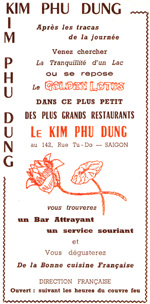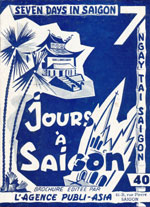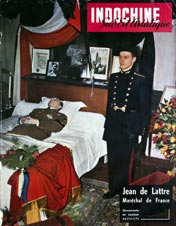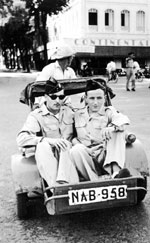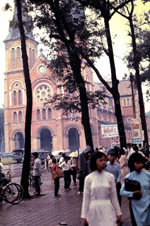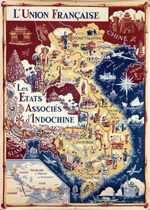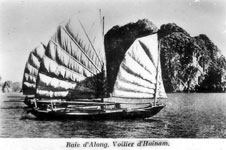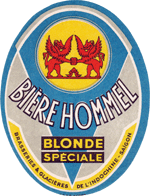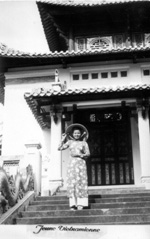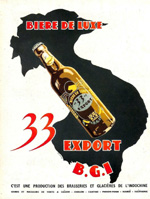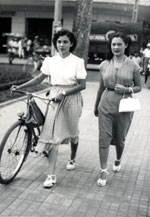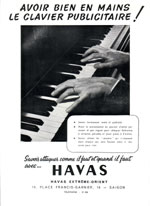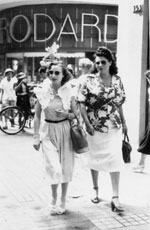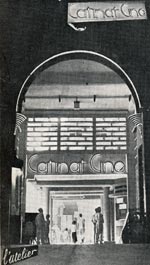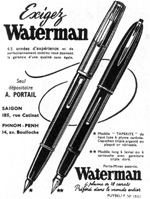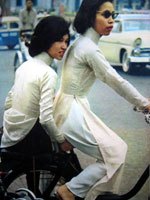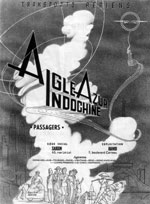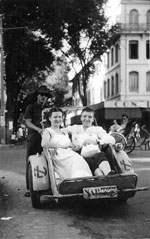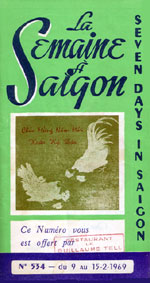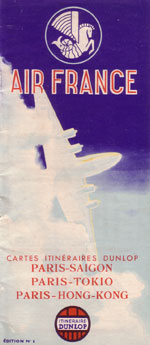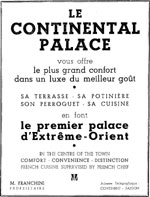

The Steamship Pasteur

The ocean liner Le Pasteur was launched in Saint-Nazaire (Loire Atlantique) in 1938 for the Compagnie Sud-Atlantique, sold in 1980, it was towed to the island of Formosa (Taiwan) and was shipwrecked in the Indian Ocean.


The Compagnie de Navigation Sud-Atlantique was a French maritime company, active from 1910 to 1962, specializing in postal, freight and passenger transport from France to the South American continent.


The Universal Weekly Newspaper “Illustration”
Article published on September 9, 1939
13 rue Saint-Georges Paris IX

The Builders of the "Pasteur"
It was to the Chantier de Penhoët, in Saint-Nazaire, that the honor and the heavy task of solving the many problems relating to the construction of the "Pasteur" fell.
It is there that, by an already distant tradition, all the largest and most beautiful ocean liners of the French merchant fleet were built: for North America, France, Paris, Ile de France, Champlain, and finally Normandie, whose experience of four years of uninterrupted service has consecrated the magnificent technical success; on the line of South America, the Atlantic, prematurely disappeared and replaced today by the Pasteur.
The Chantier de Penhoët, which since its creation has always led the construction of merchant ships and those of warships, has made a very large contribution in recent years to our national defense We know, in fact, that the Minister of the Navy called on all the resources of private industry to ensure the execution of a naval program of exceptional scope as soon as possible.
To speak only of very large units, we will point out that this shipyard delivered in 1938, the "Strasbourg" line building of 26,500 tons, while it continued in collaboration with the Chantiers de la Loire the construction of the 35,000 tons Jean Bart and that he would assemble the aircraft carrier Joffre; quite recently he received the order for an identical aircraft carrier which will be called Painlevé and which will be built on the slipway which, precisely, was used for the construction of the Pasteur. It was during this same period of feverish military preparations imposed preparations imposed by the circumstances that Penhoët built the Pasteur.
L'activité d'un grand établissement comme celui de Penhoët ne forge pas une arme économique ; elle apporte un bienfait social en éliminant le chômage : dans cet ordre d'idée, on a accompli dans ce chantier un gros effort de formation du personnel spécialisé par la rééducation professionnelle des chômeurs, œuvre éminement utile et nationale.
The activity of a large establishment like that of Penhoët does not forge an economic weapon; it brings a social benefit by eliminating unemployment: along these lines, a major effort has been made in this project to train specialized personnel through the professional re-education of the unemployed, an eminently useful and national undertaking.
A.M.
Construction of the Liner Pasteur at the Penhoët Shipyard


The steamer was launched on February 15, 1938 and christened the Pasteur by its godmother
Madame Pasteur Valléry-Radot, wife of the grandson of the scientist Louis Pasteur.
It was at the Chantier de Penhoët, in Saint-Nazaire, that the finest ocean liners in the French merchant fleet were built: for North America, France, Paris, Ile-de-France, Champlain and finally Normandie, of which the experience of four years of uninterrupted service has consecrated the magnificent technical achievement; on South America, the Atlantic, prematurely disappeared and replaced today by Pasteur.
On July 22, 1939 the Pasteur, ready to go to sea, left Saint-Nazaire to do her sea trials.

The godmother Mrs. Pasteur Valléry-Radot surrounded by the administrators of the Compagnie de Navigation Sud-Sud-Atlantique.

Characteristics of the liner Pasteur
The main characteristics: 212 meters in overall length, 27 meters beam, 14 meters depth,35,000 gross tonnage, 4 propellers 23 knots speed approximately in current service.
Number of passengers: 749, including 287 in luxury apartments and in 1st class, 124 in 2nd class and 338 in 3rd class.
The Pasteur's Art Deco decoration

Raguenet, Maillard, Lardat, and Boudin, architects.
Majorelle, Marc Simon, and Le Bourgois, decorators.
The staff includes 33 officers, namely 1 commander, 2 second captains, 4 lieutenants, 15 mechanical engineers, 3 second commissioners, 4 lieutenants, 3 commissioners, 4 doctors (2 French, 1 Spanish, 1 Portuguese) 4 radiotelegraph officers, and the crew 161 men broken down as follows:
1st deck, 48 masters, second masters and sailors.
2nd machine 113 first drivers, greasers, drivers and cleaners.

The Second Class Bar.
Gicquel, decorator.
Watercolors by J. Simonet.
The civilian staff in charge of passenger service includes 188 butlers, cooks, pastry chefs, bakers, butchers, bartenders, waiters, sommeliers, hairdressers, masseurs and masseuses, telephone operators, manicurists, telephone operators, bellboys, etc...; musicians, printers, a fencing master, a puppetmaster, and also nurses.
In all, the population of Pasteur amounts to 1,131 inhabitants. Some of our sub-prefectures which have hardly any more are not as well-endowed as the pretty floating city, which has a dual radiotelegraph and telephone network and long wave and short wave receivers making it possible to capture throughout of the journey the press telegrams transmitted at fixed times by the French and South American stations. In addition, a newspaper composed and printed on board is given to passengers every day at the same time as they are brought their breakfast.
All the inhabitants of the floating city can exercise by walking, indulge in games of their convenience, do physical training. Sales outlets, display windows give passengers the joy of shopping and taking advantage of truly sensational deals, just like in Paris, and a hairdressing salon allows them to chat about fashion and exchange menus on the neighbors.

The first-class dining room, with patina-copper linings.
Raguenet, Maillard, Lardat and Boudin, architect-decorators.
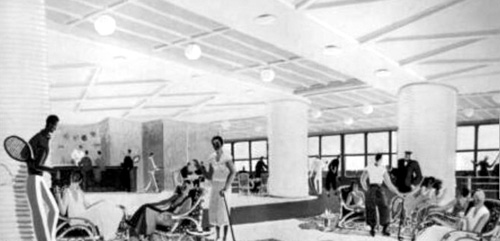
Project: The 1st class Club of the liner Pasteur.

Project: The 2nd class smoking room of the liner Pasteur.

The Pèlerin (The Pilgrim)

 |
Le Pèlerin Weekly February 27, 1938 Writing & Administration 5 rue Bayard Paris VIII In Saint-Nazaire, a magnificent liner, the Pasteur, was launched on February 15, which is to become the Normandy of the South Atlantic and connect France to Brazil in 8 days. |
|---|

Issue of the commemorative postal stamp of the Pasteur

The president of the Compagnie Sud-Atlantique requests the issue of a commemorative stamp for the inaugural cruise in September 1939. The stamps are printed in mid-August 1939, 4 million copies. But the event was canceled due to the declaration of the Second World War on September 2, 1939. The liner is stationed in Landévennec, in the harbor of Brest. On June 2, 1940, she took on more than 200 tons of gold (the defeat of France is now certain) to Halifax (Nova Scotia), the English seized the boat on July 4, 1940.
The sheets of the stamp were stored for nearly two years, and in 1941 the stamps reappeared overprinted 1F+1F.
The 1F surcharge requested by Admiral François Darlan, Secretary of State for the Navy, will be paid to the Service Central des Oeuvres de la Marine (SCOM). The SCOM exhibition, inaugurated by Marshal Pétain in the salons of the Hôtel de France in Vichy, was the occasion for the recirculation of this stamp. A few copies, however, have escaped this overload and are highly sought after by collectors.
Advertisement published in 1939 in the monthly magazine "La science et la vie"
Excerpt from this advertisement: On the occasion of the inauguration of the liner "Pasteur": Cruises in South America:
1st Cruise in South America from September 14 to October 14, 1939
2nd Cruise from October 28 to November 27, 1939
For further information, please contact: 3 boulevard Malesherbes Paris VIII - Tel.: ANJ.08.00 to 08.04.
Following the declaration of war by France and Great Britain on Germany on September 3, 1939, the liner "Pasteur" will never go to South America!
Advertisements from companies that worked on the Pasteur

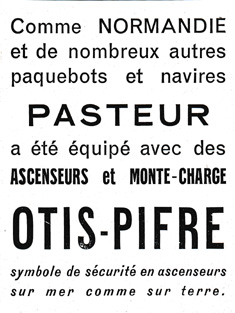

The Pasteur was requisitioned in 1940 in Canada by the British
Due to the declaration of war with Germany, the liner Pasteur will not make any of its trips scheduled for September 14 to October 14, 1939 and from October 28 to November 27, 1939 in South America!
The Pasteur was requisitioned and joined the "ship cemetery" (about 200 sailors live on board to ensure its guarding and maintenance) from Landévennec to the mouth of the Aulne near Brest on September 4, 1940 where it was repainted in light gray and equipped at the rear with 2 90mm guns and 4 anti-aircraft machine guns placed around the funnel.
From June 1 to June 9, 1939, the Pasteur transported 213 tons of gold reserves from the Banque de France to Halifax (Nova Scotia), which were to be stored at the Royal Bank of Canada in Ottawa.
On August 9, 1940, following the capitulation of France, the building was seized by the British and its management was entrusted to the Cunard company. It becomes HMT (His Majesty's Troopship) and its new home port is Liverpool.
After some modifications in the summer of 1940, adding anti-aircraft guns and lifeboats, then a radar in June 1942, it became one of the "7 Sea Monsters Allies".
Its mission now is to transport troops to the front and bring back the leave, the wounded and the prisoners.
At the end of the war it carried about 280,000 men, with, in particular, voyages between Great Britain and Quebec and rotations between South Africa and Egypt just before the battle of El Alamein.
The boat returned to French command on October 4, 1945 but was not definitively returned to France until April 13, 1946.
Le Pasteur has returned to its original colours: black hull, white superstructures and chamois funnel.

The Pasteur returned under the French flag in October 1945
Under the French flag, the first voyage of the Pasteur, with his new colors from Southampton to
Marseille via Gilbratar and Algers.
The safety certificate had accepted its armament for 4888 men including the crew but the Military Bureau of Maritime and Air Transport (BMTMA) chartered it in 1945 for about 5000. However, in 1948, the command did not hesitate to exceed this figure: two crossings were made with 5173 and 5201 passengers (crew included).
The Pasteur's journey was made in rotations which lasted about five weeks: fifteen to sixteen days for the outward journey, two to seven days for the disembarkation and sixteen to seventeen days for the return. And after a period of ten to fifteen days in Marseilles for checks, repairs, disinfection, resupply, restoration and crew permissions, the ship could resume service. Then from Marseille to Cap Saint-Jacques then a transshipment of passengers on the Saigon river (in Vietnamese: Sông Sài Gon) towards Saïgon. It has on board 4700 men of the 9th Colonial Infantry Division and 500 men of crew.
From 1946 the Pasteur will prolong from Cap Saint-Jacques to Tourane (now Dà Nang) then Halong Bay (anchorage of Puceron) for the destination of Haiphong.
From 1945 to 1956, there were 81 rotations. For the outward journey, the ship departed from Marseille most of the time from an isolated quay. Nevertheless, to avoid strikes and too violent demonstrations, the Military Bureau of Maritime and Air Transport took the decision on several occasions to divert the Pasteur to Cherbourg or Toulon.
We can quantify, including transfers between the various territories of Vietnam, the Pastor will have convoyed 500,000 men.

Thursday, March 24, 1949 aboard the Pasteur
Left: The menu for Thursday, March 24, 1949 on the Pasteur from the Pasteur's staff.
Right: A soldier from the Far East Expeditionary Corps next to Pasteur's lifebuoy making mention of his home port of Bordeaux (headquarters of the Compagnie de Navigation Sud-Atlantique).

The Pasteur in the Indochina War

The Troop ship Pasteur made its first trip to Indochina from Marseille to Saigon (Cap Saint-Jacques) in October 1945. It had on board 4,700 men from the 9th Colonial Infantry Division and 500 crew.
Until February 1956, it linked the ports of Marseilles or Toulon to those of Saigon, Tourane or Haiphong.
The duration of the journeys is approximately 15 days for Saigon and 20 days for Haiphong. The ship also performs missions to Casablanca, Dakar, Madagascar, Algiers and Oran.
Demobilized on July 7, 1956, the Trooper has to its credit 750,000 military passengers and 1,250,000 nautical miles traveled.
Until February 1956, it linked the ports of Marseilles or Toulon to those of Saigon, Tourane and Haiphong.

Pasteur's Decorations


Left: The Pasteur obtained the 1939-1945 War Cross on October 6, 1947.
Right: On January 26, 1952, the Pasteur obtained the War Cross for External Theaters of
Operations.



The Pasteur in the port of Marseille in 1947

Pasteur photos in the port of Marseille (Photo taken from a film)




Philippe, a sailor on the Pasteur en route to Indochina.
Photos taken on November 22, 1948
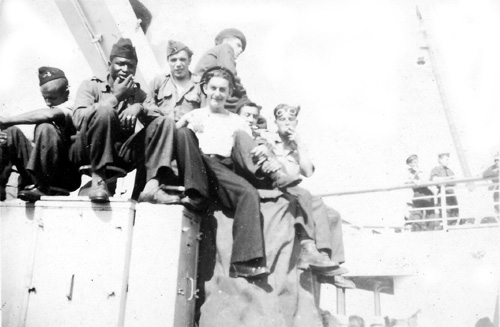


Philippe avec des militaires du Corps expédionnaire d'Extrême Orient, embarqués pour l'Indochine.
Photos prises le 22 octobre 1949

Le Pasteur dans l'océan indien

Le Pasteur dans l'océan indien.

Chief Sergeant Mayousse in 1949


Chief Sergeant Michel Mayouse on the Pasteur en route to Indochina in 1949.

The Pasteur in Along Bay (Ha Long)
Le Pasteur, here in Halong Bay (Ha Long), connected the ports of Marseille or Toulon to those of Cap Saint-Jacques (for Saigon) and Halong Bay (for Haiphong).

The bow of the Pasteur in front of Halong Bay

The bow of the Pasteur entering Halong Bay located in the Gulf of Tonkin, Quang Ninh Province, northeast Vietnam, 165 kilometers from Hanoi.

Landing of French soldiers in Halong Bay

In 1950 the troops of the "Expeditionary Force of the Far East" embarked on the Pasteur took place on board a landing craft in Halong Bay.

The Pasteur in Along Bay (Ha Long) by Jocelyn Gille

The steamer "Le Pasteur" in Ha Long Bay (Ha Long). Illustrator: Jocelyn Gille, was a naval aviation painter, who died on January 14, 2012.

The steamship "Le Pasteur" (converted to a troop transport) in Ha Long Bay (Ha Long). Gouache by Jocelyn Gille.

The Pasteur at Cap Saint-Jacques (Vũng Tàu)

From October 1945 to February 1956 the "Pasteur" was one of the essential cogs in the departures and returns of French soldiers, there were 81 rotations between France and the Far East.
The "Pasteur" disembarked its first passengers off Cap Saint-Jacques because its draft did not allow it to go up the Saigon River. Landing barges or small freighters like the "Saint-Michel" or "Île d'Oléron" took over.
She then headed for Tourane (Dà Nang) then her final destination: Halong Bay, the port of Haiphong not being equally accessible for the same reasons as that of Saigon.

Film without soundtrack, here is the description:
General de Lattre de Tassigny and Emperor Bảo Đại visit Nhatrang.
The General and the Emperor inspect the Vietnamese troops and that of the Foreign Legion as well as the tank units.
On the yacht at anchor, General de Lattre de Tassigny, Emperor Bảo Đại and other officials in the dining room take their lunch.
Activity of a patrol boat off the French coast of Halong Bay controlling the French naval blockade, anti-aircraft guns, French sailors inspecting papers and junk cargo.
Islands and shore seen from the stern of the ship, in the distance the French military marine cemetery.
The Officers on the deck of the French patrol boat.
A sailor drops anchor from the patrol boat, the men of the crew admire the majestic liner of the "Pasteur". Scenes show LCMs, sailors on a patrol boat watching the liner "Pasteur" pass by.
In the wake of the ship, two sailors seated on the prow of a patrol boat the "SS Pasteur" and two junks move away from the cameras.

An LCM patrolling Halong Bay

Barge B 058 at Cap Saint-Jacques (Vũng Tàu)

The Barge B058 responsible for protecting the mouth of the Saigon River.
The military jetties of Rạch Dừa were built at the estuary of the Sông Dinh River for the maritime transit needs of units and services stationed at Cap Saint-Jacques.
It is the only place on the peninsula where ships with a draft of up to 5 meters (ships from 4 to 6,000 tonnes) can dock at any time. This draft can go up to 10 meters at high tide.

Return of French soldiers from Indochina
of the Far Eastern Expeditionary Force

French soldiers from the Far East Expeditionary Force on the liner Pasteur returning from Indochina to Marseille.
Registration of the baggage of Non-Commissioned Officers for the port of destination of Marseille.

The farewell of the 5th Foreign Infantry Regiment to Indochina

En décembre 1955, des avions chasseurs de l'Armée de l'air française survolent le transport de troupes "Pasteur" mouillé au Cap Saint-Jacques pour dire adieu aux soldats du 5e Régiment Étranger d'Infanterie. Cette unité du Tonkin, créée sur place, quitte l'Indochine pour la première fois de son existence.
La patrouille d'avions forme un 5 dans le ciel en survolant le navire (5 pour le 5ème Régiment Étranger d'Infanterie, bien sûr).
© collection Xavier Lacrambe, via JY Brouard

L'adieu du 5eme Régiment Étranger d'Infanterie à l'Indochine

In December 1955, French Air Force fighter planes flew over the troop transport "Pasteur" anchored at Cap Saint-Jacques to bid farewell to the soldiers of the 5th Foreign Infantry Regiment. This Tonkin unit, created on the spot, leaves Indochina for the first time of its existence.
The aircraft patrol forms a 5 in the sky as they fly over the ship (5 for the 5th Foreign Infantry Regiment, of course).
© collection Xavier Lacrambe, via JY Brouard

French Troops Leave Indo-China - February 23, 1956
February 23, 1956 last evacuation of the French troops (in the photo, soldiers of the Foreign Legion), with the transshipment of the freighter "Saint-Michel" onto the liner "Pasteur".
This will be the Pasteur's farewell to Indochina...

Evacuation of Dutch marines from Jakarta (Indonesia)
on the Pasteur, triumphant arrival in Amsterdam on February 24, 1950

On February 24, 1950 the liner "Pasteur" entering the port of Amsterdam to the cheers of the Dutch crowd.

Independence was proclaimed on December 16, 1949, the liner Pasteur arrived on February 5, 1950 in the port of Jakarta and participated in the evacuation of 5,500 marines. The liner will arrive on February 24, 1950 in the port of Amsterdam where a crowd with welcome banners welcomes their soldiers!

Arrival of the Pasteur on February 24, 1950 in the port of Amsterdam with the 5,500 Dutch soldiers evacuated from independent Indonesia.


The Pasteur arrived in Marseilles on April 1946 from Southampton

The arrival of the Pasteur in the port of Marseilles.
Coming from Southampton, the Pastor arrived on April 17, 1946 in Marseilles..
This magnificent liner from the Compagnie de Navigation Sud-Atlantique will weigh anchor on Saturday for Dakar.
This departure will be marked by ceremonies chaired by Mr. Michel Moutet, Minister of the Colonies.
Michel Moutet, Ministre des Colonies.
Photo France Presse 14/18/46
The Pasteur in Marseilles

The arrival of the Pasteur accompanied by two tugs in the port of Marseilles.
The arrival and departure of the Pasteur did not go unnoticed in Marseilles. They often triggered intense agitation. If, in the first months of the conflict, the embarkations took on the appearance of the departure of holiday camps, with songs and brass bands accompanying the boarding, the atmosphere quickly grew heavy with opponents of the war in Indochina with demonstrators from the CGT and the French Communist Party who organized demonstrations of hostility each time the Pasteur arrived.
With the throwing of various objects as well as the aggressive invectives of the demonstrators
towards the passengers of the Pasteur covered the soldiers who responded with insults. The
soldiers did not understand these insults and had to be calmed down by their officers..
In total, including the various embarkations from Haiphong, Tourane and Cap Saint-Jacques and
the French ports, the Pasteur convoyed 500,000 men. He took charge of 24% of the workforce
and 30% for the year 1954 alone, nearly half of the fighters of the French troops in the Far East
knew the Pasteur..
Au total, en incluant les divers embarquements de Haïphong, Tourane et Cap Saint-Jacques et les ports français, le Pasteur convoya 500000 hommes. Il prit en charge 24% des effectifs et 30% pour la seule année 1954, près de la moitié des combattants des Troupes Françaises d'Extrême Orient connurent le Pasteur.

Aerial view of the Pasteur in the port of Marseilles

In the 1950s aerial view of Le Pasteur in the port of Marseilles.
Embarkation on the Pasteur in the port of Marseilles

EBoarding the Pasteur for Saigon in 1950

A couple in front of the photographer saying "Goodbye" on January 10, 1950
on the Wilson dock in Marseilles

A "goodbye" on the "Wilson" dock, in the background the Pasteur
Photo taken on January 10, 1950

In 1950 in the background the island of Majorca (Balearic Islands)
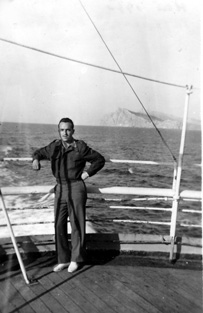
In 1950 an anonymous soldier in civilian clothes on the Pasteur in the background the island of Majorca

The Pasteur in Casablanca
In December 1955, embarkation of French troops on the Pasteur in the port of Casablanca.

The Pasteur moored on its quay in Marseilles

The Pasteur moored on its quay in Marseille
The steamer Pasteur in 1956

The liner Pasteur under the management of the "Compagnie Maritime des Chargeurs Réunis"

Operation Musketeer

The liner Pasteur in the harbor of Algiers
July 26, 1956: Nationalization of the Suez Canal.
Colonel Gamal Abdel Nasser scuttled boats to prevent traffic on the Suez Canal. Tankers can no longer supply Europe.
The French and the British, affected in their interests by this measure, are preparing, together with the Israelis, a military intervention which should make it possible both to regain control of the Suez Canal and to bring down the Egyptian Raïs.
October 28, 1956: the 1st Parachute Chasseur Regiment is airlifted to Cyprus.
October 29, 1956: The HQ of Force A as Amilcar moves from Algiers to Cyprus.
United States President Dwight Eisenhower agrees with his USSR counterpart. He demands the end of the expedition.
The condemnation of the expedition by the United States is a first sign of discord.
The roads to Cairo and Suez are open to a routed adversary; but total victory eluded the French
and the English in the face of the threat of Soviet intervention and American avoidance.
At midnight, the troops received the ceasefire order. The jump of the 1st Parachute Chasseur.
Regiment on Port-Fouad is cancelled. The march towards El-Kantara of the 1st Foreign Parachute
Regiment with a battalion of British paratroopers and a squadron of Centurion tanks is canceled.
The shortest war in history comes to an end. From November 10, the companies of the 1st Foreign Parachute Regiment and the 2nd Colonial Parachute Regiment were relieved at El-Cap, at-Tinah and Port-Fouad itself by U.N. contingents. A final parade of arms and the legionnaires embark on the requisitioned old Pasteur, faithful to the appointment, bound for Algeria, towards their rear base of Zéralda.
The divorce between men of war and rulers had existed since Indochina. Suez accentuates it. The continuation with Algeria will not bridge the gap. Source: Jean Balazuc P.P.P.
This will be the last humanitarian mission of the liner Pasteur leaving Algeria for Brittany. Back in
Landévennec in 1957 the Pasteur, designed to connect France with South America she will never know Brazil and Argentina!

December 14, 1956 evacuation of French nationals in Port Said
in the background the liner Pasteur.
December 22, 1956: The last elements of the French expeditionary force leave Port-Fouad in Egypt, after being relieved by the forces of the U.N. under the command of Canadian General Burns.
December 29, 1956: The paratroopers of the 10th Parachute Division, full of resentment, denied a resounding victory, disembark from the Pasteur, the Athos, the Claude-Bernard and the barges L.C.T., in Algiers, to general indifference, without drums or trumpets, like losers.

In 1957 the Pasteur in Landévennec in a meander of the Aulne river
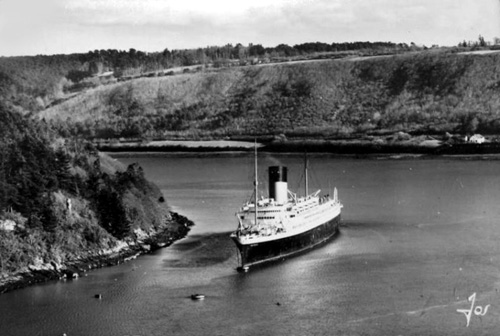
In 1957 the liner Pasteur at the ship cemetery of "Landévennec"
Again disarmed on January 25, 1957, the Pasteur stayed again at the "Cemetery of ships" in Landévennec in Finistère. Built in 1938 to connect France to South America, the new air links will condemn any attempt at a regular maritime link with Brazil and Argentina.
Sad end of the Pasteur under the French flag.
Sold to the German shipping company Norddeutscher Lloyd (NDL) on September 18, 1957, il quitte Brest le 26 !

The Pasteur becomes the Bremen in 1959
From January 8, 1958 and for 16 months, she underwent major transformations at the Bremen Vulkan shipyards, in particular to increase her transport capacities. The most visible modifications are new masts, a new bridge and above all a new funnel.
The Bremen, ex-Pasteur in dry dock in Bremen

The liner Bremen in dry dock in the port of Bremen in 1958
T.S. Bremen
Flagship of North German LLyod

N.G.L. - sailing the seven seas since 1857
The new Bremen in Bremen

The Bremen in Bremen
The future liner Bremen now has 216 1st class passengers in 110 cabins, and 906 passengers in tourist class.
The Bremen in Bremen in 1959
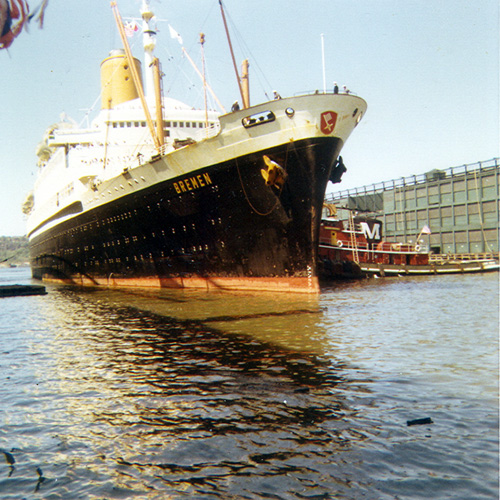
The Bremen in her home port of Bremen
was renamed Bremen (5th of the name) on May 23, 1959 and began a new career on the North Atlantic the following July, between Bremen and New York via Southampton (England) and Cherbourg (France), in direct competition with the liner France.
The Bremen in 1960 arrives at the Quai de France in Cherbourg
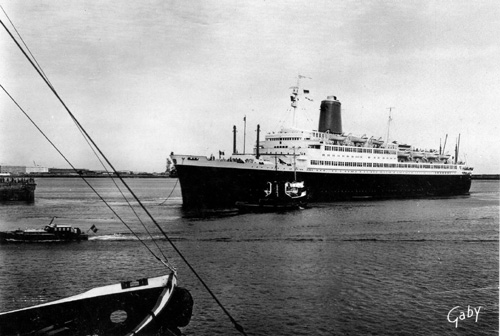
The Bremen stopping in the port of Cherbourg before leaving for New York
In just over 10 years of operation under the German flag, the Bremen will carry 360,000 passengers.
The Bremen in the port of Bremen in 1966

The Bremen in the port of Bremen
It is 212 meters long and 26.80 m wide for 32,336 tons of gross tonnage.
She power is 53,000 horsepower provided by four steam turbines heated by four boilers which can allow her to sail at 23 knots.
She is equipped with a 16 m high chimney.
Her crew is 544 sailors.
She can carry 216 passengers in first class cabin class and 906 in tourist class.
The Bremen in 1968

The Bremen on a cruise off St. Thomas Island in the Caribbean
The Regina Magna ex Pasteur in 1971

Hapag-Lloyd, the new name of the German company, divested itself of the ship and sold it on July 10, 1971 to the International cruises of the Greek shipowner Chandris.
Renamed Regina Magna, it was completely repainted in white with a blue funnel topped with a black band and a white cross in the colors of the new company.
Saudi Phil and Filipina Saudia 1

In 1976, the Philippine Singapore Ports Corporation of Manila bought the boat in order to transform it into a hotel ship in Jeddah.
It is now called the Saudi Phil and hosts 5,000 Filipino workers for about two years.
In 1980, destined for demolition, she was sold to Philsimport International Ltd.
Renamed Filipina Saudia 1, she was towed to Kaohsiung on the island of Formosa (Taiwan) and was shipwrecked on June 9, 1980 in the Indian Ocean.
1938 - 1980 - - The sad end of the myth of the Pasteur liner.
A new liner Pasteur is launched in 1966

Another Pasteur liner was built at Dunkirk (France). It was launched on June 2, 1966 for the Messageries Maritimes. It was the last liner of the Messageries Maritimes, it carried out from 1966 to 1970 the line Hamburg - South America.
The MS Pasteur was withdrawn from service on October 30, 1972, following its sale to the Shipping Corporation of India. Renamed MS Chidambaram, she was assigned to the Madras - Singapore line.
Victim of a fire on February 12, 1985 off the coast of Malabar with the disappearance of 40 victims among the passengers. MS Chidambaram is delivered to Bombay for demolition.



50th Anniversary of the stopover in Le Havre of the Linrer Pasteur

The Paquebot "Pasteur", launched in Penhoët in 1938, it finished fitting out in 1939 in Le Havre, which it left on August 25, 1939 for the war.
Her service earned her the Croix de Guerre 1939-45, and the Theaters of External Operations.
Refusing to be scrapped, she sank on June 9, 1980.
(Text on back of envelope)

SS Pasteur: Ship of the Five Names
SS Pasteur was a turbine steam ship built for "Compagnie de Navigation Sud-Atlantique".
She later sailed as Bremen for Norddeutscher Lloyds.
Over the course of her career, she sailed for 41 years under four names and six countries management

The recommended book
The Pasteur by J.Y. Brouard
 |
The Pasteur 1938 - 1980 by J.Y. Brouard JYB Editions - Adventures Once upon a time... an ocean liner The 7 Lives of the Pasteur The Trooper on the Indo Operation Musketeer The Bremen, ex-Pasteur |
|---|
















































